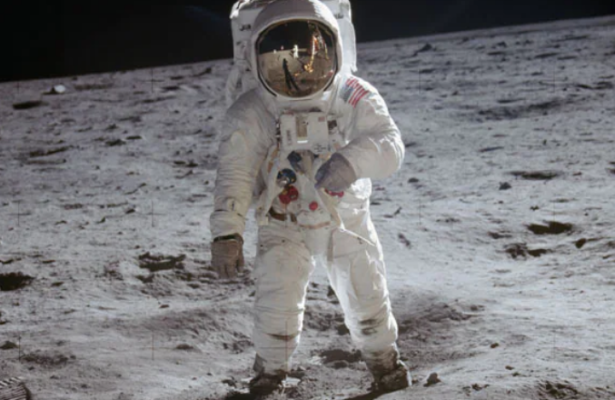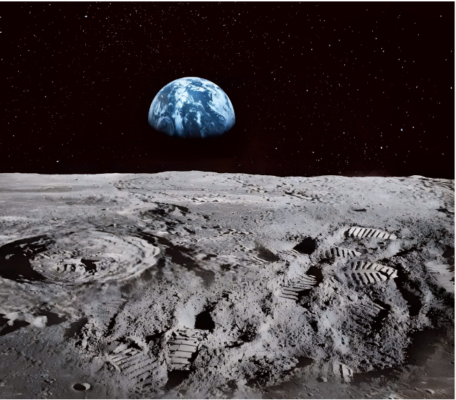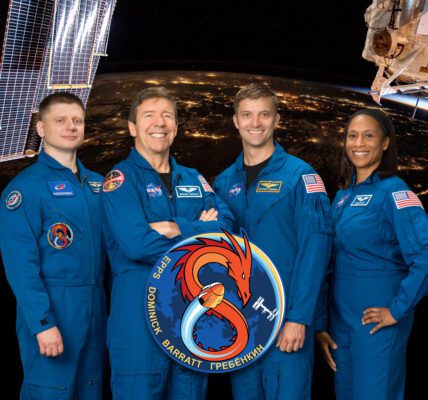- Homepage
- Science and Technology
- Shaping the Moon: The Lunar Anthropocene Unveiled
Shaping the Moon: The Lunar Anthropocene Unveiled
For over six decades, human exploration has etched an indelible narrative on the moon’s surface, sparking a compelling argument among scientists for the recognition of a new geological epoch – the “Lunar Anthropocene.” This epoch’s inception is traced back to the historic landing of the former Soviet Union’s Luna 2 spacecraft in September 1959, which left an enduring mark, signaling the dawn of extensive human activity on our celestial neighbor.
Since that seminal moment, the moon has become a dynamic canvas for human exploration, bearing the imprints of various missions that have ranged from crash landings to meticulously planned soft landings. Each spacecraft, whether intentionally deployed or inadvertently leaving a trace, has played a role in reshaping the lunar landscape. The moon, once a distant and mysterious orb, has transformed into a testament to human ambition, reaching beyond the bounds of Earth.

The lunar surface is a visual testament to humanity’s reach and ambition in space exploration. Over the decades, spacecraft from nations around the world have left their indelible marks, altering the moon‘s topography and contributing to an evolving celestial narrative. Rovers, scientific experiments, golf balls, and various artifacts now serve as markers of our presence on the moon, telling a story of exploration and scientific inquiry that transcends national borders.
The epoch-making moment of Luna 2’s hard landing was just the beginning of a transformative journey. Since then, numerous missions have followed suit, reflecting the global interest in unraveling the mysteries of our lunar neighbor. While some spacecraft have crash-landed, others have executed soft landings, leaving a lasting legacy that extends beyond the confines of Earth. As space agencies and countries set their sights on the moon for future exploration, the lunar landscape is poised to witness further transformations, both planned and incidental.

In a recent lunar update, the Peregrine spacecraft faced unforeseen challenges as it burned up upon reentry into Earth’s atmosphere due to a fuel leak. Despite this setback, the collective pursuit of lunar exploration remains undeterred. Simultaneously, Japan’s “Moon Sniper” robotic explorer, part of the Smart Lander for Investigating Moon (SLIM) mission, encountered a critical issue after a precise landing – its solar cell failed to generate electricity, likely due to facing the wrong direction. Amidst these challenges, the Japan Aerospace Exploration Agency maintains hope that the lander, designed to study the moon’s origins, may yet continue its mission if it can regain access to sunlight.
The Need for Recognition: Unveiling the Lunar Anthropocene
The proposal for a “Lunar Anthropocene” underscores the profound impact of human activities on the moon’s geological and environmental landscape. Drawing inspiration from the term Anthropocene, which signifies an epoch marked by significant human influence on Earth’s geology and ecosystems, the Lunar Anthropocene recognizes the transformative effect of human exploration on the moon. This proposal prompts contemplation on the responsible conduct of lunar exploration, potential environmental consequences, and the imperative need for sustainable practices as we venture further into our celestial surroundings.
Read More News:
- Florida’s Social Media Age Restriction Bill Balancing Protection and Rights
- New Tennessee Laws for 2024 Bring Innovations in Vehicle Safety
As the canvas of the moon narrates the story of human ingenuity and exploration, the notion of a Lunar Anthropocene beckons us to reflect on our role as stewards of celestial bodies. The delicate balance between the pursuit of scientific knowledge and exploration, and the responsible and sustainable practices essential for the preservation of celestial landscapes, becomes a pivotal consideration. The moon, once an unattainable dream, now stands as a frontier that demands thoughtful and intentional exploration. As we traverse the vastness of space, the moon remains a symbol of humanity’s quest for knowledge, urging us to approach our cosmic endeavors with a sense of responsibility and awe.




